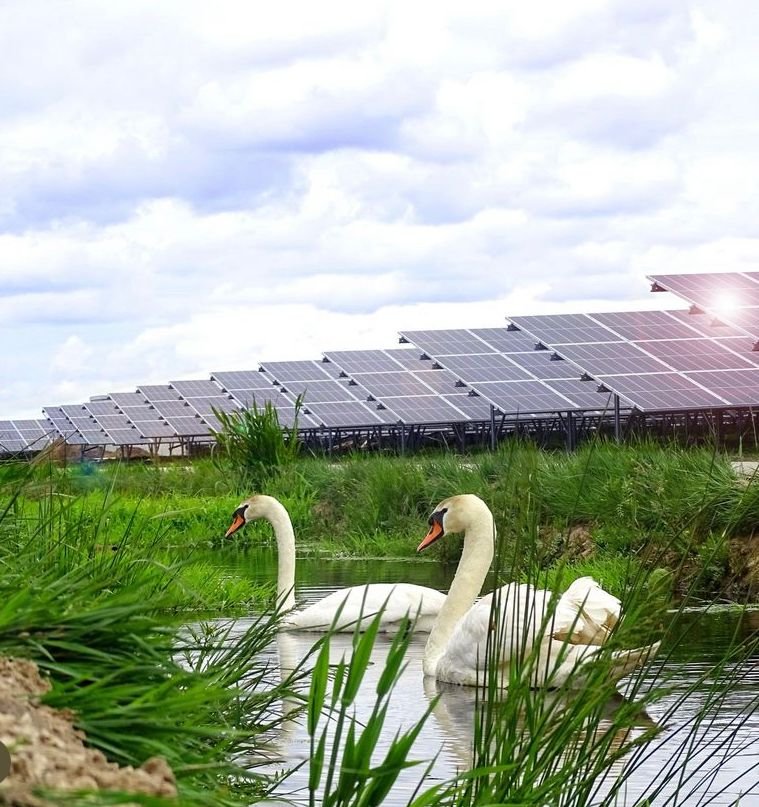Member/Partner News
Photovoltaic energy: a green swan for the Spanish economy

By: UNEF
A few weeks ago, the cornerstone was laid for a project that could become emblematic of what photovoltaic energy can be for our country. An artificial diamond factory in the town of Trujillo in Cáceres, which has the potential to create employment for 1,000 people, has been established in Spain primarily to have access, through a self-consumption solar plant, to competitively priced electricity.
In recent years, the concept of Nassim Taleb's "black swan" has unfortunately become popular. A black swan would be a negative, unexpected phenomenon with systemic consequences, such as COVID-19 or the Russian invasion of Ukraine and its repercussions on the global economy.
In contrast to this concept, we have John Elkington's "green swan": unexpected opportunities that generate exponential effects that were previously considered improbable, creating resilience and positive effects that extend to future generations. Unlike black swans, in green swans, according to Elkington, the role of policymakers in creating the appropriate market, regulatory, and governance conditions is key to seizing the opportunity that arises.
Photovoltaic energy presents our country with the possibility of being our green swan, transforming an environmental problem into a source of improvement for our socio-economic conditions, particularly in rural Spain.
Photovoltaic technology is a simple and straightforward technology, accessible to all countries on equal terms. The difference in price per kilowatt-hour (kWh) is determined by two factors: sunlight hours and the availability of land to take advantage of economies of scale. In both conditions, Spain is the best-positioned European country. To give us an idea, let's consider that in Germany, the average operating hours of a plant are below 1,000 hours, while in Spain, they are around 1,900 hours. That means we should be able to produce electricity at half the price.
The world is undergoing its fourth industrial revolution, based on the World Economic Forum's definition, which involves a fusion of technologies with blurred boundaries between the physical, digital, and biological realms.
For the first time, our country is facing an industrial revolution with a competitive advantage in the price of electricity. This advantage should lead us to talk more frequently about new industrial locations rather than offshoring, especially in the case of electro-intensive industrial applications.
However, this process is not without challenges in order for us to harness it properly. For reasons of territorial balance and fairness, these investments should prioritize regions in our territory where more solar energy projects are being carried out, which generally coincide with rural Spain. We must transform regions that have been sources of emigration into immigration destinations.
We must also maintain the significant social acceptance that our technology has enjoyed so far. For this, it is crucial that companies, policymakers, social actors, and the media act responsibly in their behaviors. Neo-denialist positions cannot unjustifiably jeopardize this opportunity. Additionally, pricing systems for the produced energy should be in place, allowing industrial consumers to benefit from the competitiveness of solar energy while providing a sufficient price signal to incentivize investments.
To fully develop this potential, we need to increase electrification and regulate storage and hydrogen production promptly and appropriately. Additionally, we require streamlined administrative processes that facilitate the implementation of these new companies. Finally, the National Energy and Climate Plan (PNIEC) should be realistically revised in light of this new scenario, raising the target to a range between 55 and 65 gigawatts (GW) by 2030.
In addition to indirectly promoting industrialization through attracting new investments, we also need to directly foster the industrialization of the photovoltaic value chain. The black swans mentioned earlier have shown us that dystopias exist and can recur. The consolidation of renewable energies as the primary source of electricity production shifts the focus from energy geopolitics to energy techno-strategy. It is no longer about controlling certain regions of the world for their oil or coal production capacity; what matters is controlling the technology that allows us to harness the sun or wind, which is abundant in all countries.
In Spain, we have a value chain capable of producing 65% of the production cost of a photovoltaic plant. However, the remaining 35% consists of panels, for which we have a strong dependence on Asia. Our challenge is to have the capacity to manufacture the entire value chain in Spain under competitive conditions. Just as we previously discussed the concept of strategic oil reserves, we now need to talk about strategic technological reserves.
This green swan presents us with a historic opportunity. Let's seize it.
![Global Solar Council [logo]](/static/images/gsc-logo-horizontal.svg)